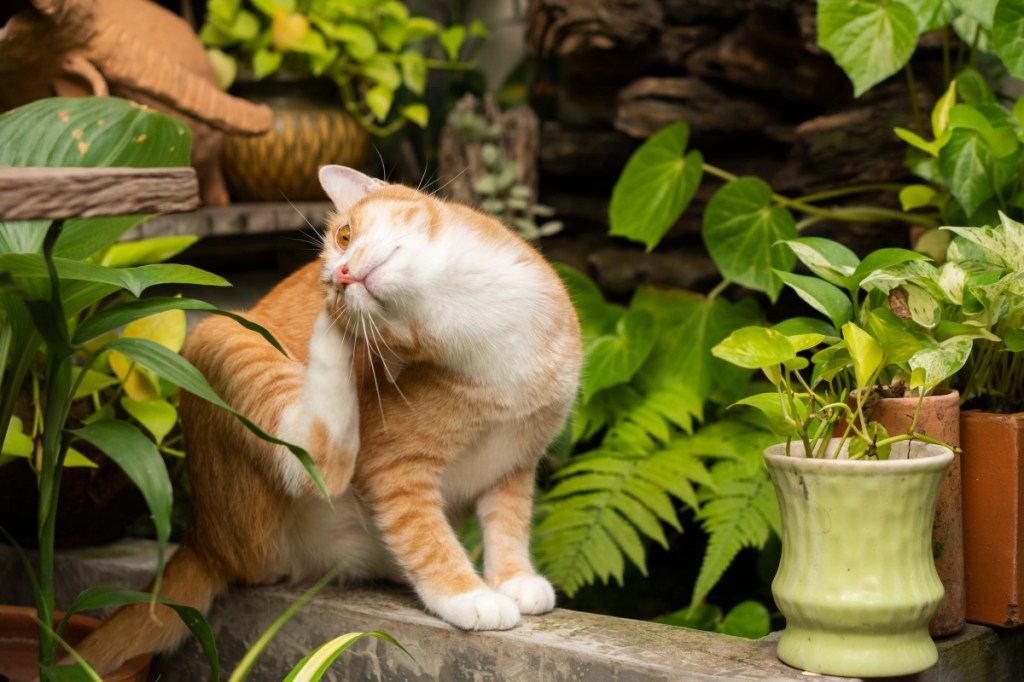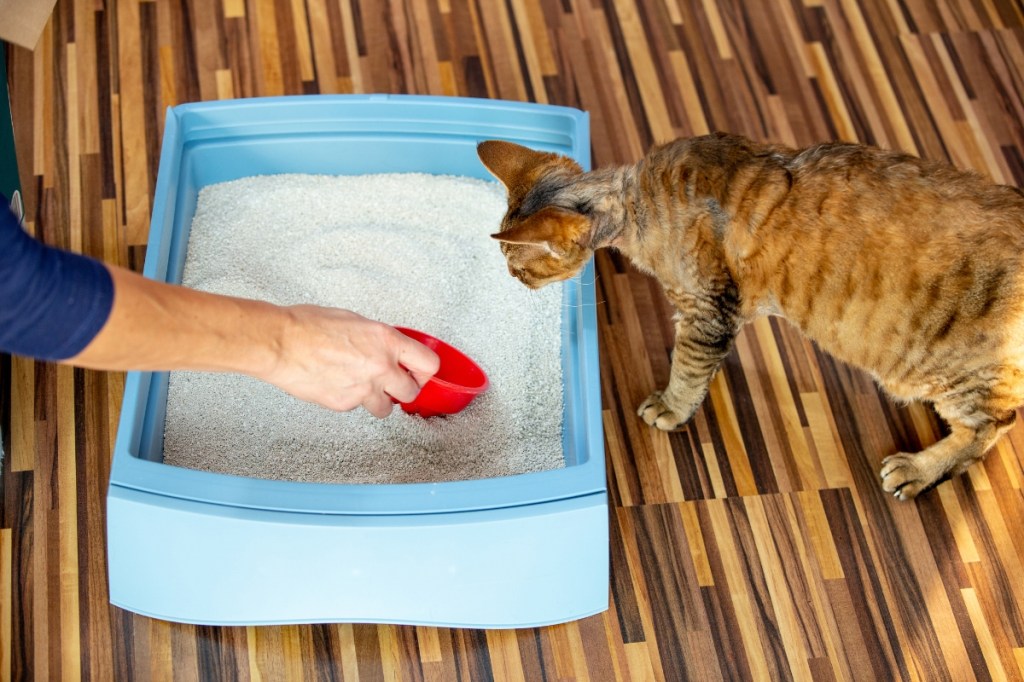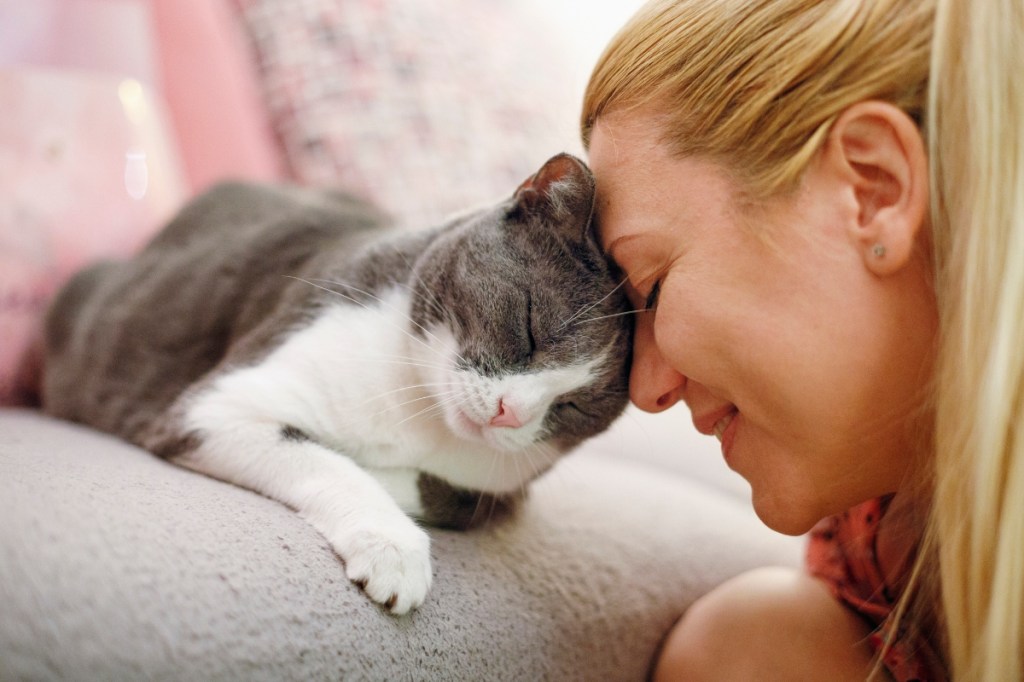Table of Contents
Cat (feline) asthma is the more common name for feline bronchitis. Bronchitis (bronk-eye-tis) is an inflammation of the bronchi and bronchioles in the lungs. Bronchi (bronk-eye) and bronchioles (bron-key-oles) are the tubes that allow air to move down into the lungs when your cat inhales (takes a breath in) and allows air back out of the lungs when they exhale (lets a breath out). When the inside of these tubes become inflamed, they become narrower, making it more difficult to move air into and out of the lungs. A real-world equivalent would be a drain pipe that has food or mineral buildup inside preventing water from moving through easily.
Feline asthma is a chronic (lasting a long time) condition that can be managed but is not able to be cured.
Clinical Signs and Symptoms of Feline Asthma
There are a few key clues to look for when you are concerned about cat asthma. Your cat does not need to have all of these clinical signs, and some can have a cough every once in a while, or will only show signs during certain seasons of the year.
- Coughing can occur when cats have asthma. Coughing can sound very similar to when your cat is trying to get a hairball out, but no hairball is produced. Some cats will only have one cough every once in a while, others will cough daily or multiple times per day.
- Wheezing is a musical sound that occurs when air tries to move through inflamed bronchi/bronchioles.
- Exercise intolerance is a decrease in daily or normal activity because of an inability to get enough oxygen to their lungs and bodies. If your cat normally plays, and suddenly approaches play with less enthusiasm, or they stop playing earlier than normal, you may be seeing exercise intolerance.
- Hunched over posture with head and neck extended forward. This posture is a classic sign of feline asthma.
- Difficulty breathing, also called respiratory distress or respiratory crisis can look different to different individuals. Some cats will take slow, deep breaths to get as much oxygen into their lungs as possible. Other cats will take short, very fast breaths, often breathing with their mouth open. Breathing in either of these ways is abnormal. Difficulty breathing is a life-threatening situation and veterinary care is required immediately. Cats may become anxious or frantic to breathe so be careful.
- Blue or purple nose or gums is a sign of significantly compromised ability to get oxygen into the body. If you see blue or purple discoloration of the nose or gums, it is important that you get your cat to a veterinarian right away.
Causes
Some cats may be genetically predisposed to feline asthma, but it is also thought to develop due to allergies. Certain allergens can cause inflammation in a cat’s lungs when inhaled, resulting in asthma-like symptoms.
Diagnosing Feline Asthma
There are a few other conditions that can clinically look just like feline asthma including heartworm disease, lungworm disease, bacterial infection in the lungs, and a certain kind of cancer. It is important that your veterinarian is thorough in their exam and diagnostics so they can be sure they have a diagnosis and appropriate treatment plan for your pet.
If your pet is only having occasional symptoms at home, you can help start the diagnostic process by taking a video of any coughing, wheezing, exercise intolerance, abnormal body posture, or abnormal or fast breathing patterns. While in the veterinary hospital, many cats won’t demonstrate clinical signs, so having a video to show what you are seeing at home can be quite helpful. Also, tell your veterinarian what signs you are seeing and how often.
Your veterinarian will perform their comprehensive (full-body) exam and then will listen to your cat’s lungs with their stethoscope. Abnormal lung sounds would help your veterinarian confirm suspicion of feline asthma.
Your veterinarian will likely recommend x-rays (also called radiographs) to be taken. The lungs have a very specific appearance when feline asthma is present. They may also recommend something called a “tracheal wash” to look for evidence of certain inflammatory cells from the lungs, bacteria or lungworms. A heartworm test can also be performed to rule out that as a possibility.
Treating Feline Asthma
If your cat is having difficulty breathing or has a blue/purple discoloration of their nose or gums, the first treatment is having a veterinarian give them oxygen and medications to help them breathe at a veterinary hospital.
If your cat is coughing, wheezing, demonstrating the classic feline asthma posture (described above), has exercise intolerance, or has been stabilized by your veterinarian after respiratory distress, treatment generally involves two components: the use of an anti-inflammatory medication, and use of one or more bronchodilators (bronk-oh-die-late-ors). The anti-inflammatory medication is usually a steroid that decreases inflammation in the lung tubes. The bronchodilators will dilate (widen) the tubes to allow more air to flow into the lungs.
The anti-inflammatory medication comes in an inhaler, oral or transdermal form. The bronchodilator is generally available in oral, transdermal or injection form. Tell your veterinarian your availability for medicating your cat so they can decide the appropriate medication and dosing schedule that is best for you and your cat.
Prevention
A cat will develop asthma in their life if it is in their genetics to do so. However, there are irritants that can incite or exacerbate (worsen) the clinical signs of asthma that can be prevented. Dusty cat litter, perfume, candle smoke, cigar smoke, cigarette smoke, marijuana smoke, essential oils, plug-in or aerosol air fresheners, car exhaust (for those of us who live near major roads) are all potential respiratory irritants that should be minimized in households with asthmatic cats.
Having a cat with asthma does not mean a death sentence, but it does mean you need tools (medications) and a plan of action if your cat goes into crisis. If you minimize the irritants in your home, keep an eye on your feline friend and continue treating them as directed by your veterinarian, you will live a happy life together.
The content is not intended to be a substitute for professional veterinarian advice, diagnosis, or treatment. Always seek the advice of your veterinarian or other qualified health provider with any questions you may have regarding a medical diagnosis, condition, or treatment options.








